Trip hop is a musical genre that originated in the late 1980s in the United Kingdom, especially Bristol. It has been described as a psychedelic fusion of hip hop and electronica with slow tempos and an atmospheric sound, often incorporating elements of jazz, soul, funk, reggae, dub, R&B, and other forms of electronic music, as well as sampling from movie soundtracks and other eclectic sources.

Maggot Brain is the third studio album by the American funk rock band Funkadelic, released by Westbound Records in July 1971. It was produced by bandleader George Clinton and recorded at United Sound Systems in Detroit during late 1970 and early 1971. The album was the final LP recorded by the original Funkadelic lineup; after its release, founding members Tawl Ross (guitar), Billy Nelson (bass), and Tiki Fulwood (drums) left the band for various reasons.

Aquemini is the third studio album by the American hip hop duo Outkast. It was released on September 29, 1998, by LaFace Records. The title is a portmanteau of the two performers' Zodiac signs: Aquarius and Gemini, which is indicative of the album's recurring theme of the differing personalities of the two members. The group recorded the majority of the album in Bobby Brown's Bosstown Recording Studios and Doppler Studios, both in Atlanta, Georgia.

Eric B. & Rakim are an American hip hop duo formed on Long Island, New York, in 1986, composed of DJ Eric B. and rapper Rakim. They first received acclaim for their 1987 debut album Paid in Full, which featured versions of the popular singles "Eric B. Is President" and the title track. They followed with three successful albums: Follow the Leader (1988), Let the Rhythm Hit 'Em (1990), and Don't Sweat the Technique (1992).
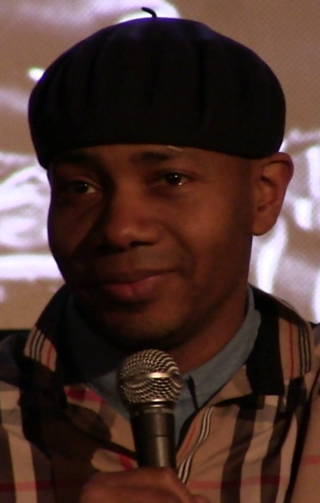
Paul Dennis Miller, known professionally as DJ Spooky, That Subliminal Kid, is an American electronic and experimental hip hop musician whose work is often called by critics "illbient" or "trip hop". He is a turntablist, record producer, philosopher, and author. He borrowed his stage name from the character The Subliminal Kid in the novel Nova Express by William S. Burroughs. Having studied philosophy and French literature at Bowdoin College, he has become a professor of Music Mediated Art at the European Graduate School and is the executive editor of Origin magazine.
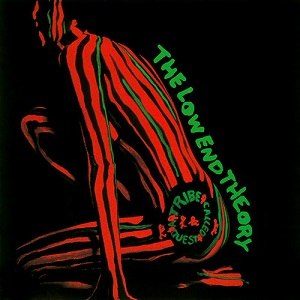
The Low End Theory is the second studio album by American hip hop group A Tribe Called Quest, released on September 24, 1991, by Jive Records. Recording sessions for the album were held mostly at Battery Studios in New York City, from 1990 to 1991. The album was primarily produced by group member Q-Tip, with a minimalist sound that combines bass, drum breaks, and jazz samples, in a departure from the group's debut album, People's Instinctive Travels and the Paths of Rhythm (1990). Lyrically, the album features social commentary, word play, humor, and interplay between Q-Tip and fellow member Phife Dawg.

Done by the Forces of Nature is the second studio album by American hip hop group Jungle Brothers, released on November 7, 1989, by Warner Bros. Records. Recording sessions for the album took place in 1989 at Calliope Studios in New York City, and production was handled by the Jungle Brothers. It was mixed at Apollo Studios by Kool DJ Red Alert and the Jungle Brothers. The album's title may refer to a line from the Bhagavad Gita, a Hindu scripture, wherein Krishna says, "Those who are deluded by the illusive power (Maya) of Nature become attached to the work done by the forces of nature," 3:28.
Jazz rap is a fusion of jazz and hip hop music, as well as an alternative hip hop subgenre, that developed in the late 1980s and early 1990s. AllMusic writes that the genre "was an attempt to fuse African-American music of the past with a newly dominant form of the present, paying tribute to and reinvigorating the former while expanding the horizons of the latter." The rhythm was rooted in hip hop over which were placed repetitive phrases of jazz instrumentation: trumpet, double bass, etc. Groups involved in the formation of jazz rap included A Tribe Called Quest, Digable Planets, De La Soul, Gang Starr, The Roots, Jungle Brothers, and Dream Warriors.

Permutation is the third studio album by Brazilian electronic music producer Amon Tobin. It was released on 1 June 1998 by Ninja Tune.

Endtroducing..... is the debut studio album by American music producer DJ Shadow, released on September 16, 1996, by Mo' Wax. It is an instrumental hip hop work composed almost entirely of samples from vinyl records. DJ Shadow produced Endtroducing over two years, using an Akai MPC60 sampler and little other equipment. He edited and layered samples to create new tracks of varying moods and tempos.

Vocal Studies + Uprock Narratives is a 2001 studio album by Guillermo Scott Herren, the first released under the name Prefuse 73. The album was released on June 11, 2001 on Warp. The music was created by Herren alone, with some tracks featuring guest vocals from MCs Mikah 9, MF Doom and Aesop Rock as well as vocalist Sam Prekop from The Sea and Cake. Inspired by Miami bass and early 90s hip hop, Herren had been recording music with his Music Production Center (MPC) for Schematic Records, a label known primarily for intelligent dance music (IDM). After working with various local hip hop artists making what he described as "very boring rap beats", Herren was inspired to take his music in a more left-field direction.
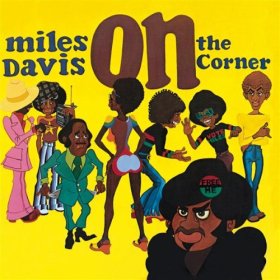
On the Corner is a studio album by the American jazz trumpeter, bandleader, and composer Miles Davis. It was recorded in June and July 1972 and released on October 11 of the same year by Columbia Records. The album continued Davis's exploration of jazz fusion, and explicitly drew on the influence of funk musicians Sly Stone and James Brown, the experimental music of Karlheinz Stockhausen, the free jazz of Ornette Coleman, and the work of collaborator Paul Buckmaster.

Behind the Front is the debut studio album by American hip hop group Black Eyed Peas released on June 30, 1998, through Interscope Records and will.i.am Music Group.
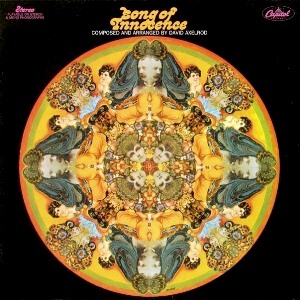
Song of Innocence is the debut album by American composer and producer David Axelrod. It was released in October 1968 by Capitol Records. In an effort to capitalize on the experimental climate of popular music at the time, Axelrod composed the album as a suite-like tone poem interpreting Songs of Innocence, a 1789 illustrated collection of poems by William Blake. Recording took place at Capitol Studios in Los Angeles with an orchestra and studio musicians from the Wrecking Crew collective, including keyboardist and conductor Don Randi, guitarist Al Casey, bassist Carol Kaye, and drummer Earl Palmer.

Golden age hip hop refers to mainstream hip hop music created from the mid or mid-late 1980s to the early or early-mid 1990s, particularly by artists and musicians originating from the New York metropolitan area. A successor to the new-school hip hop movement, it is characterized by its diversity, quality, innovation and influence on overall hip hop after the genre's emergence and establishment in the old-school era, and is associated with the development and eventual mainstream success of hip hop. There were various types of subject matter, while the music was experimental and the sampling from old records was eclectic.

Dr. Octagonecologyst is the debut solo studio album by American rapper and Ultramagnetic MCs member Kool Keith, released under the alias Dr. Octagon. Originally titled Dr. Octagon, it was released on May 7, 1996, on Bulk Recordings in the United States and Mo' Wax in the United Kingdom. The album was later reissued with a different track listing by DreamWorks Records in 1997 under the title Dr. Octagonecologyst. The album was produced by Dan "The Automator" Nakamura and featured the work of turntablist DJ Qbert. KutMasta Kurt provided additional production work. The artwork for Dr. Octagonecologyst was drawn by Brian "Pushead" Schroeder.

Last 2 Walk is the ninth studio album by American Southern hip hop group Three 6 Mafia. It was released on June 24, 2008 via Hypnotize Minds/Columbia Records. Production was handled mostly by the last two remaining members, DJ Paul and Juicy J, as well as Akon, Dead Executives, DJ Montay and Superpower, with co-producer Giorgio Tuinfort. It features guest appearances from Project Pat, UGK, 8Ball & MJG, Akon, Al Kapone, DJ Spanish Fly, Good Charlotte, Lil Wyte, Lyfe Jennings, Unk, Superpower and Young D.

Hard Groove is an album by the American musician Roy Hargrove, released in 2003. It was credited to his group, the RH Factor.

Debo Band are a Boston-based Ethiopian music band led by saxophonist Danny Mekonnen and fronted by vocalist Bruck Tesfaye. Ranging from 10–12 members playing horns, guitars, violins, percussion, and accordion, their sound incorporates Ethiojazz, folk, and pop styles from the Horn of Africa infused with tinges of motifs from Eastern Europe and Asia, as well as punk, experimental, and psychedelic rock. Rolling Stone described Debo's sound as, "guitar solos, massed vocals, violin and brass [that] rush in like a Red Bulled marching band...Dance at your own risk."
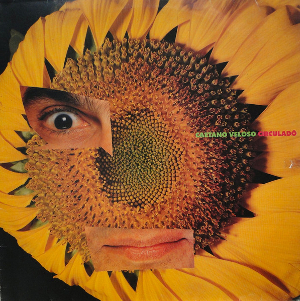
Circuladô is an album by the Brazilian musician Caetano Veloso. It was released in 1991. Circuladô was Veloso's third album to be widely distributed in the United States.


















